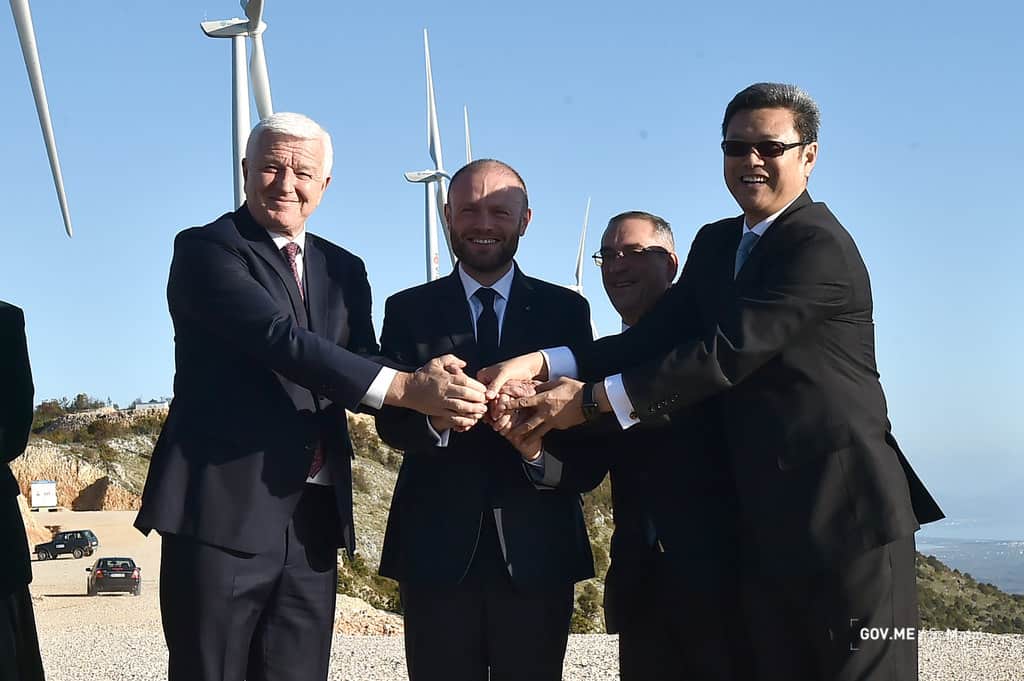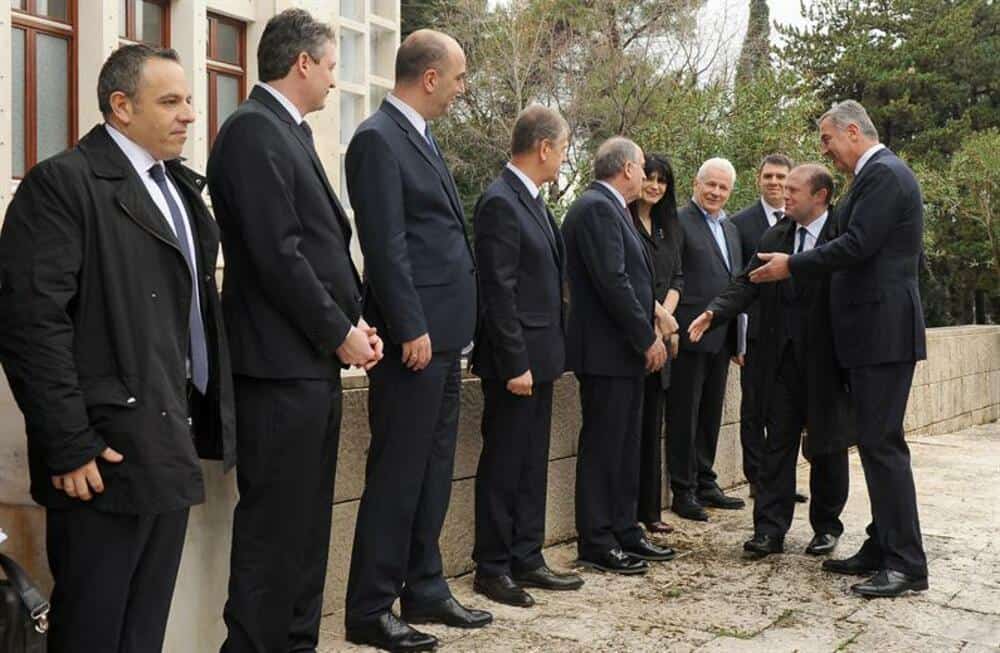This article includes my comments on the now notorious Wind Park Project in Montenegro together with my comments. I also list questions addressed to the investigators into what I will refer to as the Montenegro Deal.

Timeline and Facts
The audited financial statements of Fersa Renovables for the financial year ended 31 December 2016, disclose on page 11 the purchase-sale agreement with Cifidex, which had bought the project for €2.9 million, to sell the subsidiary company Mozura Wind Park in Montenegro. This was signed on 12 February 2015. But according to the same document, it was finalized on 3 December 2015 as it was subject to ‘suspensive’ conditions, similar to conditions that would be typical of a ‘promise of sale’ agreement here.
On 28 December 2015, the audited financial statements of Enemalta disclosed in note 12 on page 16 that it purchased 100% ownership of Mozura Wind Park for €10.3 million. This company was established for the sole purpose of the development and operation of a 46MW capacity wind farm located in the Mozura/Ulcinj region of Montenegro.
The same note 12 states that the purchase was completed by Enemalta to facilitate the transaction and the intention of the Board in 2015 was to transfer the subsidiary to a related company in 2017. This means that Enemalta never had the intention to operate the company itself and it acquired the company with the intention to sell it. Accordingly it was classified under the heading of ‘assets held for sale’.
The same note 12 states that in 2016, the Government of Montenegro required Enemalta to retain a minimum percentage ownership of 10%.
At 31 December 2016, the Group and Company considered the carrying amount (that is the value in the accounting records) to have remained the same, that is Euro 10.3 million.
During the year ended 31 December 2017, a revised agreement was entered into to sell 90% of Mozura Wind Park to another company called Malta Montenegro Wind Power JV Limited. This was sold for €10.08 million. The reported profit on this transaction amounted to Euro 0.81 million.
Enemalta therefore sold 90% of €10.3 million, (€9.27 million) for €10.08 million.
Corporate Governance and Responsibility
Directors
Clause 13 (f) (ii) point 11 of the Articles of Association of Enemalta plc states that the Board of Directors shall have the power to decide on the execution or termination of any agreement or contract or disposal of any assets, each of which is of a contract having a value being equal to, or more than one million euro but lower than ten million (€1,000,000-10,000,000).
Extraordinary Resolutions taken at a General Meeting of the shareholders
The shareholders of Enemalta pl, are the Government of Malta (200 million Ordinary A Shares), SEP(Malta) Holding Ltd (100 million Ordinary B Shares, and Malta Government Investments Ltd (1 Ordinary C Share). SEP is fully owned by Shanghai Electric Power & Energy Development.
Clause 19 (j) states that an extraordinary resolution, is a resolution that requires the consent of 75% in nominal value of all the shares of the company.
Comment
In view of the value limitations (less than €10 million) of clause 13 (f) (ii) for the directors to take a decision themselves on the purchase-sale agreement, that is:
- Purchase of 100% of the Mozura Wind Farm from Cifidex for €10.3 million,
- Sale of 90% of the Mozura Wind Farm to Malta Montenegro Wind Power JV Limited for €3 million,
the directors could only take a decision to propose the approval of both the purchase and the sale of the project to a general meeting for the shareholders to give their approval through an extraordinary resolution passed by not less than 75% of the shares. The means both the Malta government and the Chinese shareholders needed to approve.
However, the directors are jointly and severally liable for the management of the company, and in so being, they have to act as a ‘bonus paterfamilias’ to protect the assets of the stakeholders, who are the taxpayers for the government’s share, and the ultimate stakeholders of the Chinese shareholder.
The directors are also jointly responsible to adhere to all laws and regulations regulating the operation of Enemalta as a legal person, not least laws against money laundering.
In my opinion therefore, although the decision rested with the shareholders, the directors too can be held criminally responsible for wrongful trading (the purchase of the project at a highly suspicious price: €10.3 million for what cost Cifidex, €2.9 million), and also criminally responsible for potential money laundering: that allowed the beneficiary to benefit from this transaction which has all the attributes of money laundering.
Obviously, again in my opinion, Konrad Mizzi as the minister responsible for energy, is in the front line for the same charges, together with all the members of the cabinet who may have approved the investment in the project.

Police Investigation into the 17 Black/Montenegro deal in collaboration with Europol
I would like to bring the following observations and questions to the attention of the Investigators:
Enemalta
- The recently replaced secretary of the company, Aaron Mifsud Bonnici, is also the personal lawyer of Konrad Mizzi, then minister of e This appointment is clearly against all principles of ethics and independence and is highly suspicious.
- Who proposed the project? Was it the government through the cabinet of ministers or was it them minister for energy?
- Was the Board informed about the proposed investment, and was it given a professional presentation to take an informed decision, before calling a general meeting through the company secretary to consider the investment and to approve it through an extraordinary resolution?
- Did the Board appoint independent financial advisors and legal advisors to give them their professional opinion on the project and its valuation?
- Did the Board carry out a professional due diligence on Cifidex?
- Was the professional due diligence report, if carried out, presented and explained to the Board by the persons commissioned for the due diligence?
- Did the due diligence experts liaise with the auditors of Cifidex and Enemalta? If so, did they access the audit working papers?
- Did the due diligence report include any reservations?
- Did the due diligence include the identification of the ultimate beneficial owners of Cifidex?
- Was any confirmation received whether Cifidex was a related party?
- If the ultimate beneficial owners were not identified, did the auditors of Enemalta include a note in their audit report, and was a suspicious transaction report submitted to the FIAU by the Chief Finance Officer and the auditors of Enemalta?
- If a suspicious transaction report was submitted to the FIAU, what action did they take, if any?
- Was the Accountancy Board informed by the directors to ensure that all auditing standards relating to the deal, were complied with?
- Was a Board meeting formally called by the company secretary to consider the investment and to propose it at a general meeting?
- Were formal minutes taken of the Board meeting?
- Who prepared the formal purchase-sale agreement for Cifidex? Was it Enemalta?
- Was the General Meeting properly convened?
- Who was present at the General Meeting to represent the shareholders, and did they have a formal delegated power of attorney?
- Were formal minutes taken of the General Meeting and of the Extraordinary Resolution including the voting results?
- Were the directors and the auditors of the company present for the General meeting?
- Who signed the purchase-sale agreement, and was this notarized?
- Once the sales agreement was amended to the sale of 90% of the Mozura Wind Park, was this approved formally through another meeting of the directors and another general meeting of the shareholders?
Bankers
- Which bank processed the transactions?
- Who instructed the Bank to effect the payment to Cifidex?
- Was the payment made in one single transaction or multiple transactions?
- Did the processing bank enquire about the rationale of the deal, and the parties involved, before processing the payment?
- Was the ultimate beneficial owner of the payee, that is Cifidex, identified by the Bank, before effecting the transaction?
- Did the Bank raise a suspicious transaction report, if the ultimate beneficiary/beneficiaries could not be identified?
- Who approved the transaction within the Bank?
- Was the approval of the Banks’s Risk Manager and Money Laundering Reporting Officer (MLRO) obtained? If yes who approved?
- Were there any Politically Exposed Persons within the chain of the whole transaction cycle?